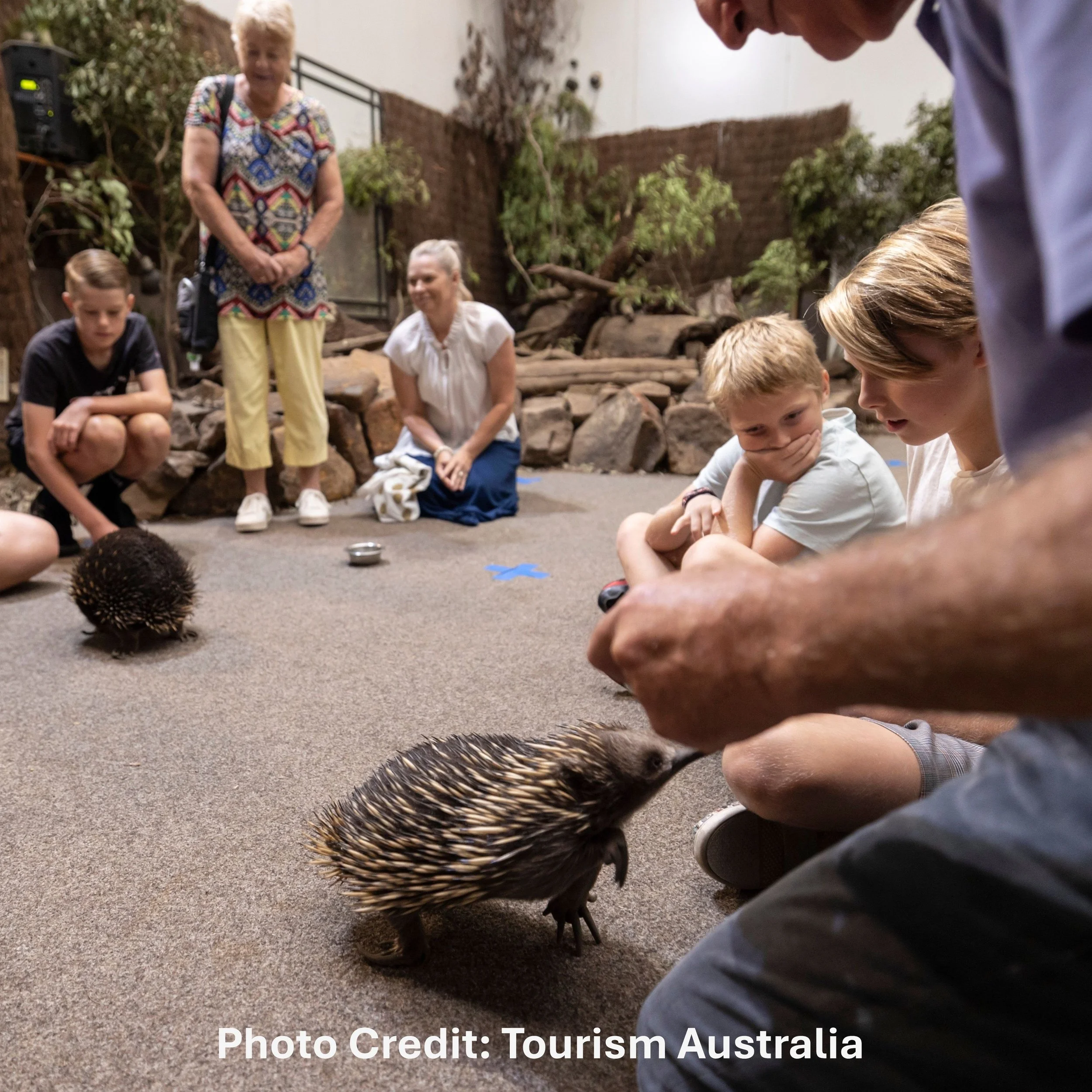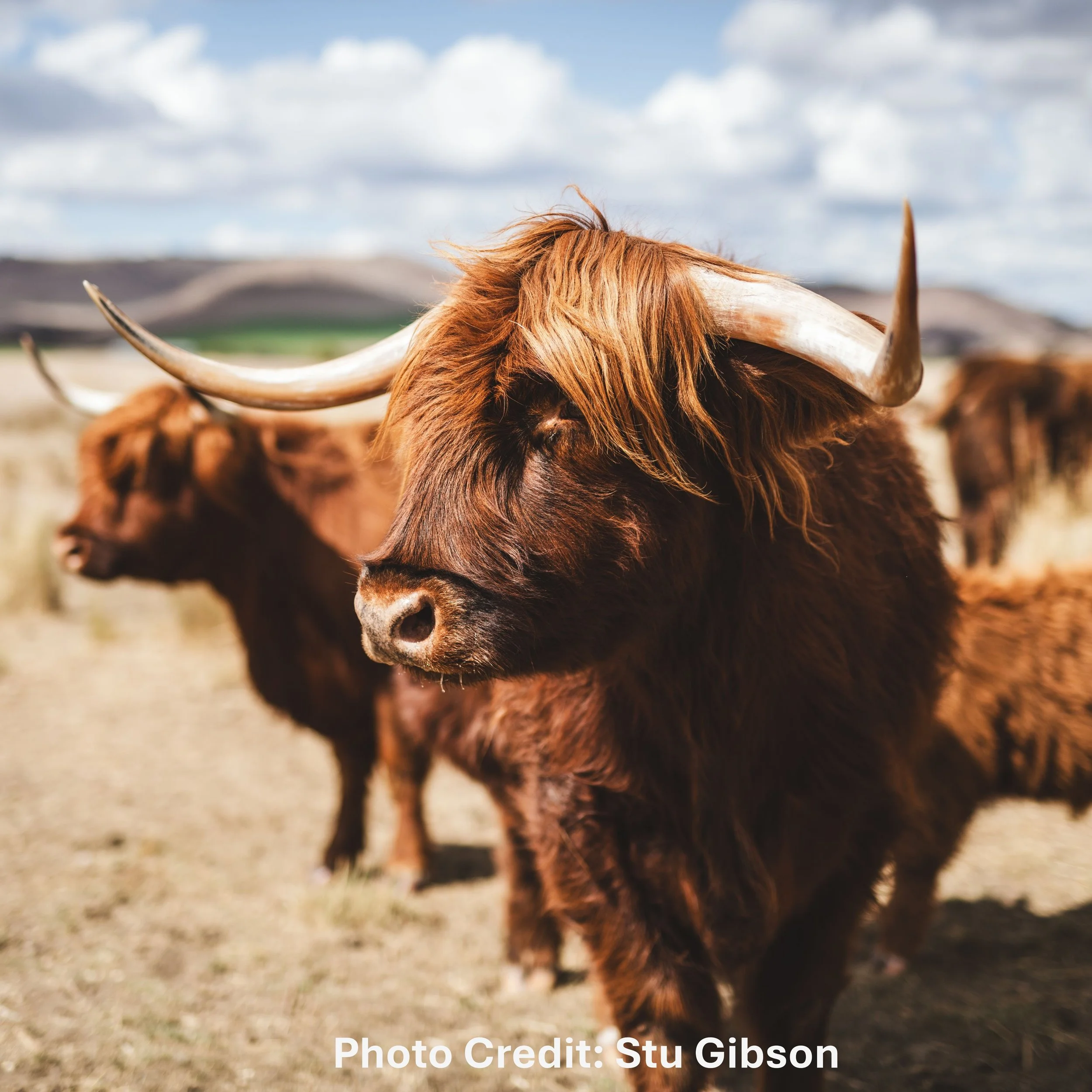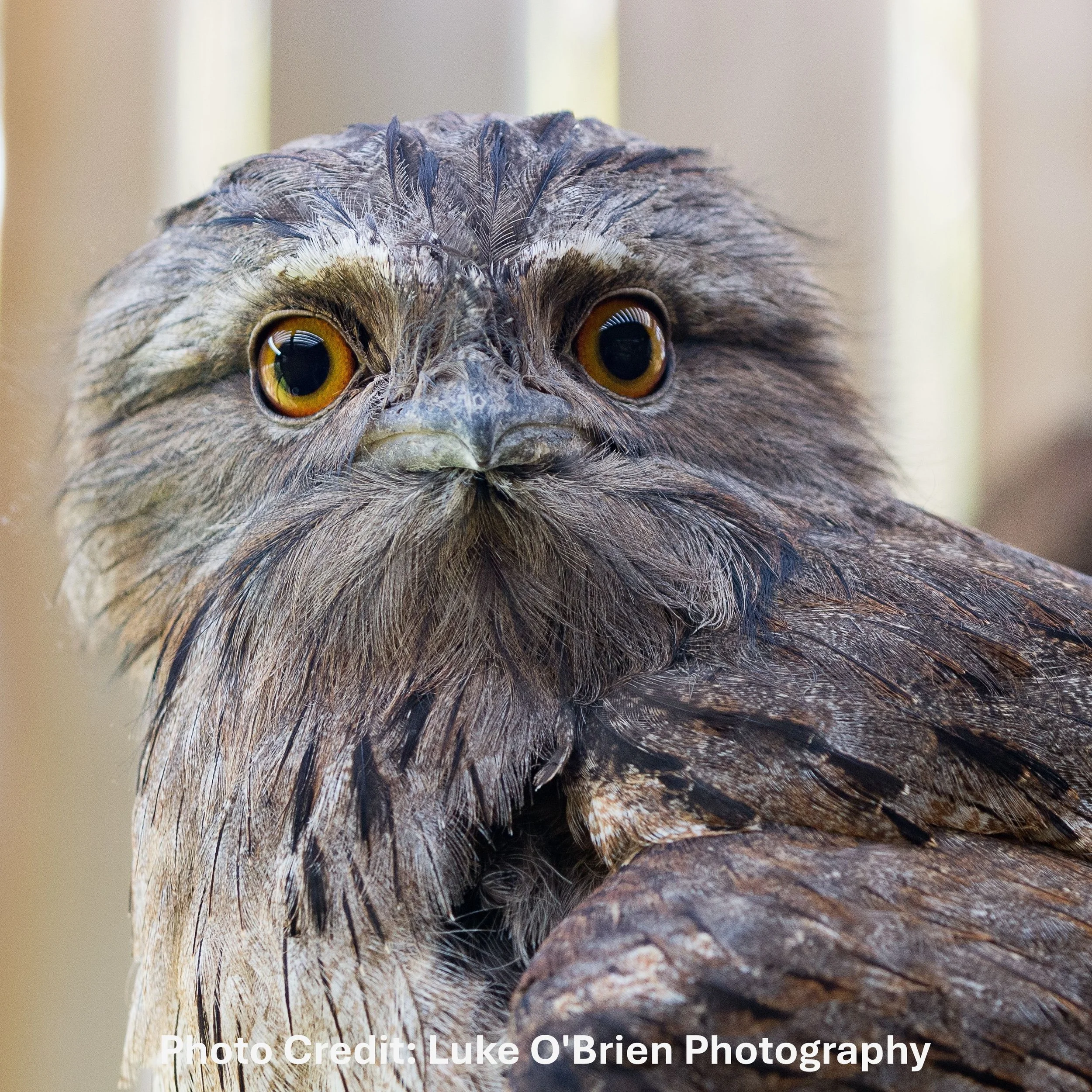Day 1 – Arrival & Northern Wonders
Welcome to Launceston! Your journey begins with a visit to Beaconsfield Mine & Heritage Centre, an interactive museum that brings the gold rush era to life. Primary students will delve into the history of gold mining by taking on the role of young miners, panning for gold, operating interactive exhibits, and hearing dramatic rescue stories from the infamous 2006 mine collapse. Secondary students will dive into the geology of gold mining, engineering advancements and consider the economic impact of the industry on Tasmania.
Next, students visit Platypus House, a rare opportunity to observe playful platypuses and friendly echidnas up close. Primary students will learn about these fascinating monotremes, their quirky behaviors, and how they hunt for food. Secondary students will explore evolution, biological adaptations, and conservation efforts for these unique Australian species.
A visit to Seahorse World offers a magical look into the secret world of seahorses. Primary students will marvel at their ability to change color, use their tails to grip onto seagrass, and how male seahorses give birth. Secondary students will examine marine ecosystems, breeding programs, and sustainable fishing practices that protect seahorse populations.
Day 2 - Science & Wildlife
The morning begins at Hive Tasmania, an innovative learning and discovery centre located in Ulverstone, offering a unique blend of art, science, and space exploration under one roof. With a planetarium, a state-of-the-art science centre, an interactive art gallery, and hands-on workshops, it provides an immersive educational experience tailored to both primary and secondary students. Before visiting, students and teachers can access a range of learning resources designed to align with the Australian Curriculum. These materials help prepare students for their experience by introducing key scientific, artistic, and astronomical concepts they’ll explore during their visit.
Science & STEM Exploration
HIVE’s science centre is packed with interactive exhibits that bring science to life in an exciting and engaging way. Primary students will engage in hands-on experiments related to physics, chemistry, and environmental science. They might explore topics like electricity, forces, simple machines, and sustainability, helping them build foundational STEM knowledge. Secondary students will have the opportunity to investigate more complex scientific concepts, such as renewable energy, climate science, robotics, and engineering challenges. Specialised workshops can be arranged to align with school learning objectives, making science both fun and relevant.
The Planetarium: Journey Through the Universe
HIVE is home to Tasmania’s largest planetarium, offering a spectacular journey through space with stunning 360-degree projections of the cosmos. Primary students will be introduced to planets, constellations, and the wonders of the night sky, gaining an understanding of the Earth’s place in the solar system. Secondary students can explore more advanced topics, such as black holes, exoplanets and Indigenous astronomy, providing insight into how ancient cultures have interpreted the stars for navigation and storytelling.
The Art Gallery & Creative Expression
HIVE also boasts an art gallery featuring rotating exhibitions from local, national, and international artists. Primary students engage in interactive art installations, creative storytelling, and hands-on craft workshops where they explore different art forms, colours, and textures. Secondary students can examine visual storytelling, cultural influences in art, and the connection between art and science, with the opportunity to engage in art-making activities that reflect their own interpretations of the world.
Tailored Learning Experiences
Each visit to HIVE Tasmania is carefully curated to match students’ age groups and educational needs. Teachers can work with the centre’s educators to select workshops, shows, and activities that complement classroom learning, ensuring a rich and engaging experience.
Next, students head into the heart of the Tasmanian Wilderness—Cradle Mountain. Here, they'll walk through ancient rainforests, hopefully spot some wallabies and wombats, and admire the breathtaking Dove Lake. As night falls, a visit to Devils @ Cradle provides an unforgettable after-dark wildlife encounter. Students will learn about Tasmanian devils, quolls, and wombats up close, learning about their habits and diet. Also explore disease control programs, the threat of Devil Facial Tumor Disease, and genetic diversity conservation.
Day 3 – Hidden History & Renewable Energy
The morning takes students to Rustville, Westbury, a fascinating outdoor museum where rusted relics from the past tell a story of time, decay, and history. Primary students will wander the gardens, discovering how nature reclaims abandoned objects over time. Secondary students will reflect on the preservation of artifacts, how everyday objects become historical treasures, and the effects of weathering.
The next experience is at Waddamana Power Station Heritage Site, Tasmania’s first hydroelectric power station. Primary students will see how early engineers harnessed the power of water, turning it into electricity through giant turbines. Secondary students will analyze Tasmania’s hydroelectric grid, renewable energy sources, and the transition to sustainable power sources which helped to achieve net-zero status.
The late afternoon brings a Curringa Farm tour, where students experience life on a working sheep farm. On a farm tour experience a sheep shearing demonstration, working farm dogs rounding up the sheep, an escorted forest walk and in depth conversations about crops and landcare. Secondary students can engage in topics such as sustainable farming, agritourism, and ethical wool production. While onsite students will enjoy a true farm to table experience with a delicious BBQ dinner.
Day 4 – Bruny Island Adventure
The day begins with a ferry ride to Bruny Island, home to breathtaking coastal scenery, rich history, and unique wildlife. First, students embark on an exhilarating Bruny Island Cruise with Pennicott Wilderness Journeys, exploring sea caves, towering cliffs, and marine life. Primary students will keep their eyes peeled for seals, seabirds, and dolphins, learning how these creatures thrive in Tasmania’s waters. Secondary students will discuss marine conservation, and the effects of climate change on Tasmania’s coastline.
At the Bligh Museum, students uncover the island’s maritime history, featuring stories of explorers, convicts, and shipwrecks.
A stop at The Neck Lookout offers panoramic views over Bruny Island’s dramatic coastline, followed by a visit to Bruny Island Honey, where students learn about different types of honey, types of bees in each colony, and taste samples produced from about 400 hives on Bruny Island.
As night falls, students arrive at Murrayfield Station Youth Mob Camp, where Uncle Rodney Dillon, a respected Indigenous elder, welcomes them for a cultural immersion experience. Primary students will hear Dreamtime stories, try bushcraft activities, and learn about traditional hunting and gathering methods. Secondary students will engage in discussions about Indigenous land management, cultural identity, and reconciliation. Students stay overnight at the camp, sleeping bags and pillows are required for this experience.
Day 5 – Wildlife, Conservation & Native Gardens
The day starts with a visit to the Marine Discovery Centre, where students can engage with live marine creatures, explore Tasmania’s diverse underwater world, and learn about ocean conservation. Primary students will enjoy interactive touch tanks, learning about the different marine creatures and their habitats. Secondary students will examine Tasmania’s role in local marine research, the impact of climate change on oceans, and marine sustainability.
A visit to the Raptor Refuge introduces students to Tasmania’s powerful birds of prey, such as wedge-tailed eagles. Primary students will see these magnificent birds up close, learning about their role in the ecosystem and rehabilitation of injured birds. Secondary students will explore conservation challenges, rehabilitation efforts, and habitat protection.
At Inverawe Native Gardens, students walk through stunning landscaped native flora, home to butterflies, bees, and native birds. Before heading back to Hobart, a fun stop at the Margate Train Lolly Shop brings smiles to everyone’s faces!
Day 6 – Final Exploration & Departure
Before leaving Tasmania, there is time for one last adventure, choosing between:
A visit to kunanyi / Mount Wellington, where students will take part in one of the many short walks. From the summit take in the views over Hobart and beyond. The time during the walk could be used to discuss local plants, animals and alpine environments.
A visit to historic Richmond, home to Australia’s oldest bridge, charming convict-era buildings, and fascinating stories from the past.
It is time to farewell Tasmania, full of new knowledge about Tasmania’s history, wildlife, science, and cultural heritage, taking with you memories of an unforgettable learning adventure.




